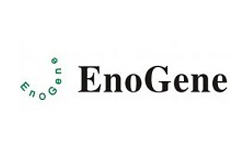×
Login Form
×
Registration
Profile Informations
Login Datas
or login
Elisa
-
Ferret CD4 / Leu-3 ELISA Pair Set
Sensitivity: The minimum detectable dose of Canine KIM-1 / TIM1 / HAVCR1 was determined to be approximately 125 pg/ml. This is defined as at least three times standard deviations above the mean optical density of 10 replicates of the zero standard.Learn More
Detection: 125 pg/ml -
Ferret CD8a / Lyt2 ELISA Pair Set
Sensitivity: The minimum detectable dose of Ferret TNF-alpha / TNFA was determined to be approximately 156.25 pg/mL. This is defined as at least three times standard deviations above the mean optical density of 10 replicates of the zero standard.Learn More
Detection: 156.25 pg/ml -
Ferret TNF-alpha / TNFA ELISA Pair Set
Sensitivity: The minimum detectable dose of Ferret CD4 / Leu-3 was determined to be approximately 31.25 pg/ml. This is defined as at least three times standard deviations above the mean optical density of 10 replicates of the zero standard.Learn More
Detection: 31.25 pg/ml
THE ELISA
Since 1971 ELISA is used for detection and or determining the concentration of proteins within analyte mixture, low molecular weight compounds (e.g. Toxins, hormones) or viruses.
The ELISA is based on an antibody-antigen detection. Basis of this is the immobilization of an antigen or antibody on a multiwell plate (e.g. Polystyrene). The analyte is bound in the subsequent step.
The antigens are bound by the antibodies via hydrogen bonds, ionic and hydrophobic interactions, and Van-der-Waals forces. This binding occurs on a key-lock principle and is very specific. The antibodies used can thereby be monoclonal (mAb) or polyclonal (pAb). Monoclonal antibodies are made from hybridoma cells, a fusion of a cancer cell (myeloma) and an antibody-producing cell (B-cell) which selectively bind a specific epitope on the antigen. Polyclonal antibodies are a mixture of different antibodies which recognize different epitopes on the surface of one antigen. Once successfully attached the detection is normally made by colorimetry.
The successful antigen-antibody binding and addition of a substrate leads to a color change in the microtiter plate, which is catalyzed by an enzyme that has been previously conjugated to the antibody or antigen.
For further information, please refer to our Data Library at any time.







































